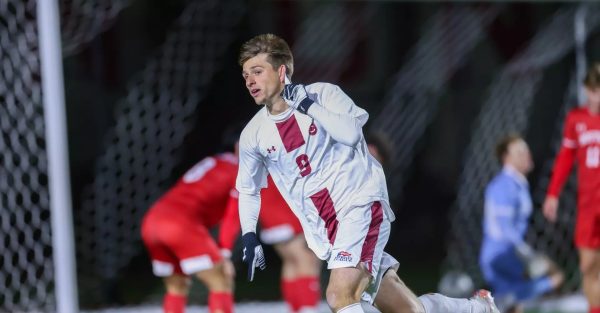Communicating Colgate History in the Classroom
Students’ perception of Colgate’s history of racism is filtered through the lens of the faculty, professors and courses that discuss these issues. Professor Carolyn Hsu, a member of Colgate’s department of sociology and anthropology, who focuses on civil society, progressive systems of citizenship and activism in China, has significantly contributed to this discussion as she conducted Colgate’s first campus climate survey that gathered student responses about racism and discrimination on campus in 2003. Although 2003 may seemingly reflect outdated data, a 2009 campus climate survey allowed the administration and students to examine changes in racism at Colgate.
After explaining the structure of the campus survey, in which students responded to statements about their experience at Colgate on a scale from strongly disagree (1) to strongly agree (7), Hsu described some of the survey’s racially informed data.
“In terms of race/ethnicity, one of the most concerning findings was that, for students, race mattered a lot in shaping student’s experiences of Colgate. Regardless of the statement, we almost always got the same results by race: White students reported the best experience, Black students reported the worst experience, and other students of color (Latinx, Asian/Pacific Islander, Native American, Bi/multiracial) would report a score somewhere in the middle.”
Hsu further connected the statistical findings from the 2003 campus climate survey to the way in which she discusses racially informed power dynamics in the classroom.
“I begin most of my classes talking about this research, and how it shows that there are power differentials between different types of students on campus — and how those power differentials affect the dynamics in the classroom. I use this as a launching point to talk about the classroom community, and what we can do to make it a more equitable and inclusive space,” she said.
Returning to the campus climate survey data results, Hsu noted a significant change between 2003 and 2009 in regards to the way in which students’ own experiences on campus are impacted by those around them, particularly students who identify as racially different from themselves.
“In the 2003 survey, if a white student thought that conditions were bad for Black students on campus, it didn’t seem to have any effect on their own satisfaction with Colgate. That all changed in 2009. If you were a white student who thought the racial climate was bad, your own level of satisfaction at Colgate was lower. On the other hand, the general racial results that we found in 2003 — that Black students were having a more negative experience than everyone else on campus — still held true.”
Although Hsu was especially moved by this shift in students’ overall concern with all members of the Colgate community and their satisfaction with the school, she also acknowledged that students’ academic, social and overall experiences at Colgate remain directly tied to their racial identity and related issues of discrimination. Given the persistence of race determining a students’ satisfactory or negative experience on campus, Hsu expressed her thoughts on Colgate’s future.
“Colgate will have to become more racially and ethnically diverse, and it really needs to become more inclusive. This is a matter of survival. We have been fortunate that Colgate has done a good job of increasing its reach and appeal, so now we draw in more diverse student applicants from all over the country and around the world. However, we need to continue to do a better and better job of this to flourish in the 21st Century.”
Abigail Flynn, a current senior from St. Louis, Mo., who is concentrating in Middle Eastern and Islamic studies and psychology, provided a student perspective about how the history of race at Colgate was discussed in her Reinventing Berlin course taught by Professor Claire Baldwin. Flynn explained that although the course was not directly tied to race, Baldwin organized a discussion with two alumni from the 1960s/70s about student and administrative responses to racist incidents on campus.
“The situation was that there was a Black student who was walking down [Broad Street] and a guy in a frat shot, or pretended to shoot at him, from a window. At the same time, there was an issue with a frat that had rescinded a bid to a brother after they found out that he was Jewish. The Black Student Union, which was not what it was called at the time, got together and organized a rally where they forced the board of trustees into an emergency meeting by occupying the president’s office for three days. They sat down and did not move. It worked, the board of trustees banned the frat that had the brother who shot at the Black student and they suspended Phi Delt[a Theta].”
Esther Rosbrook, the director of the Africana, Latin, Asian, Native American (ALANA) Cultural Center, discussed the persistence of racial discrimination on campus and ways in which we as a community can work on developing a more diverse and inclusive environment.
“We have to engage more proactively with our multicultural and racially underrepresented students, faculty and staff, and finally, change the situation. It is also vital for us to think about the issues that the social status that our students of color have to face. Having to navigate the social experience while at the same time, we are racially underrepresented community members can be twice as hard.”
The campus climate survey and Baldwin’s spotlight on alumni experiences demonstrates the importance of critically examining discrimination on campus and further valuing diverse student voices and experiences.

Kristen Quinonez is a senior from Los Angeles, CA concentrating in English and political science. She has previously served as an editor for the Arts and...







